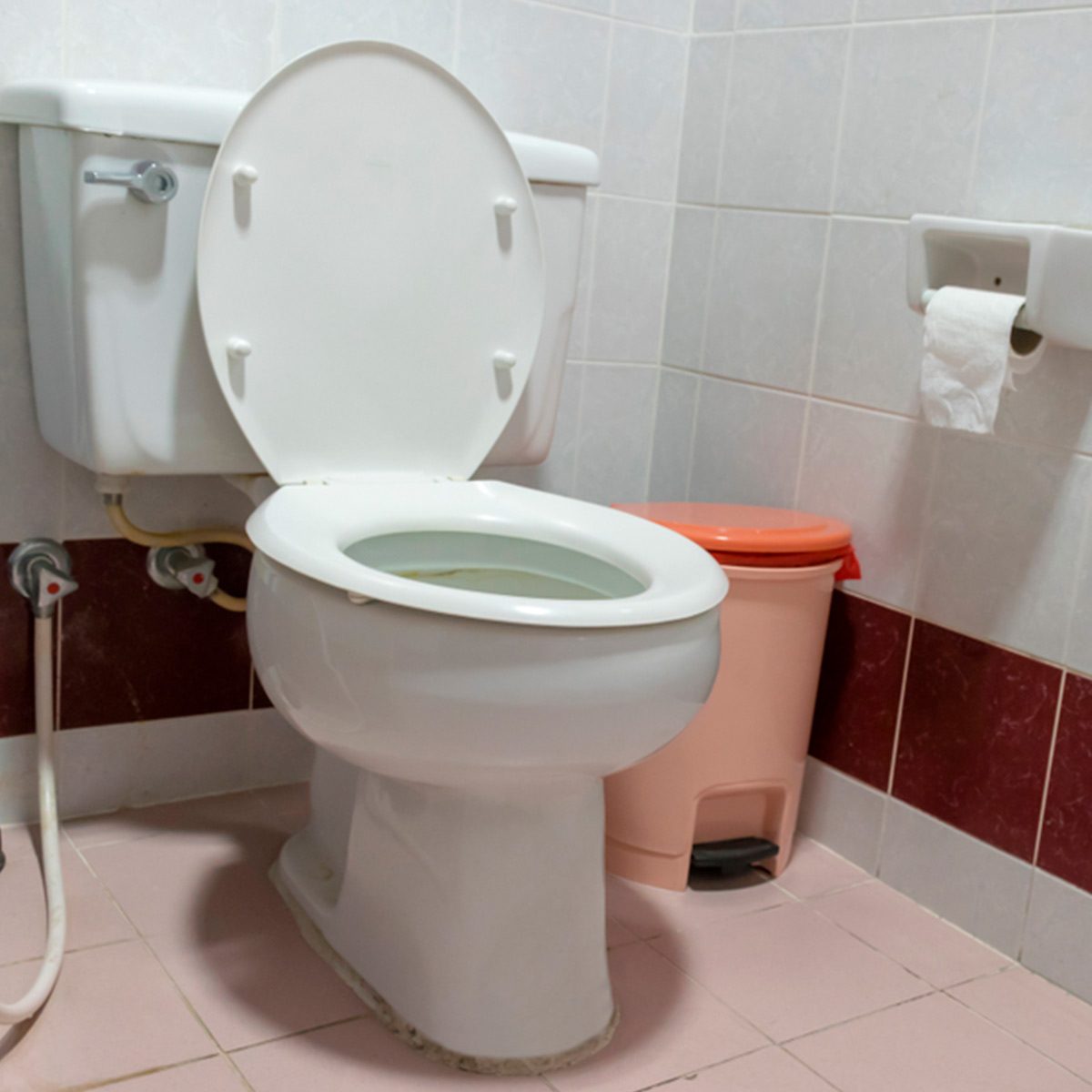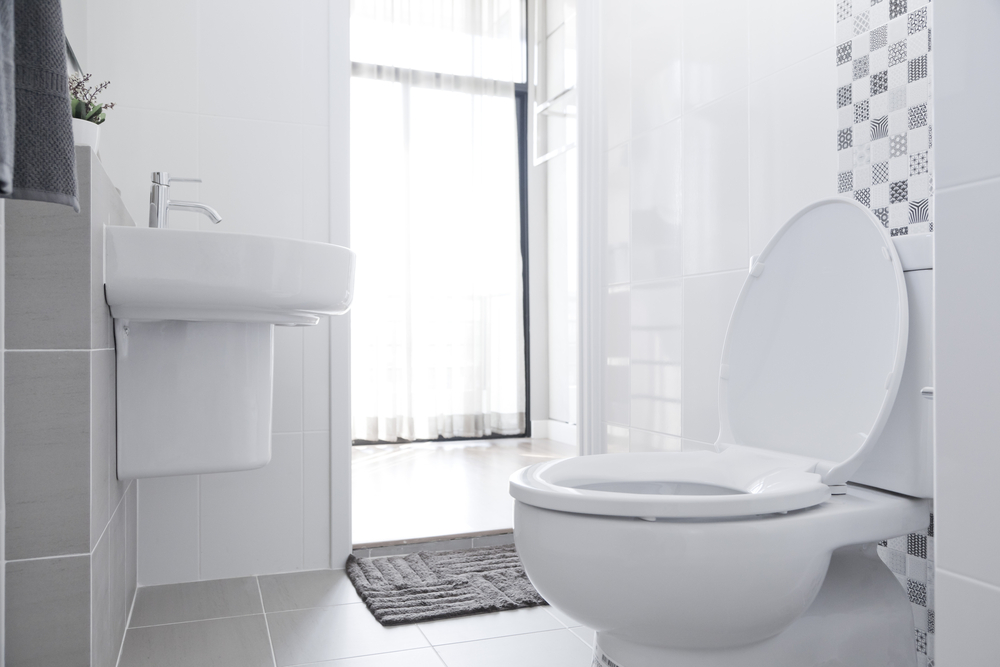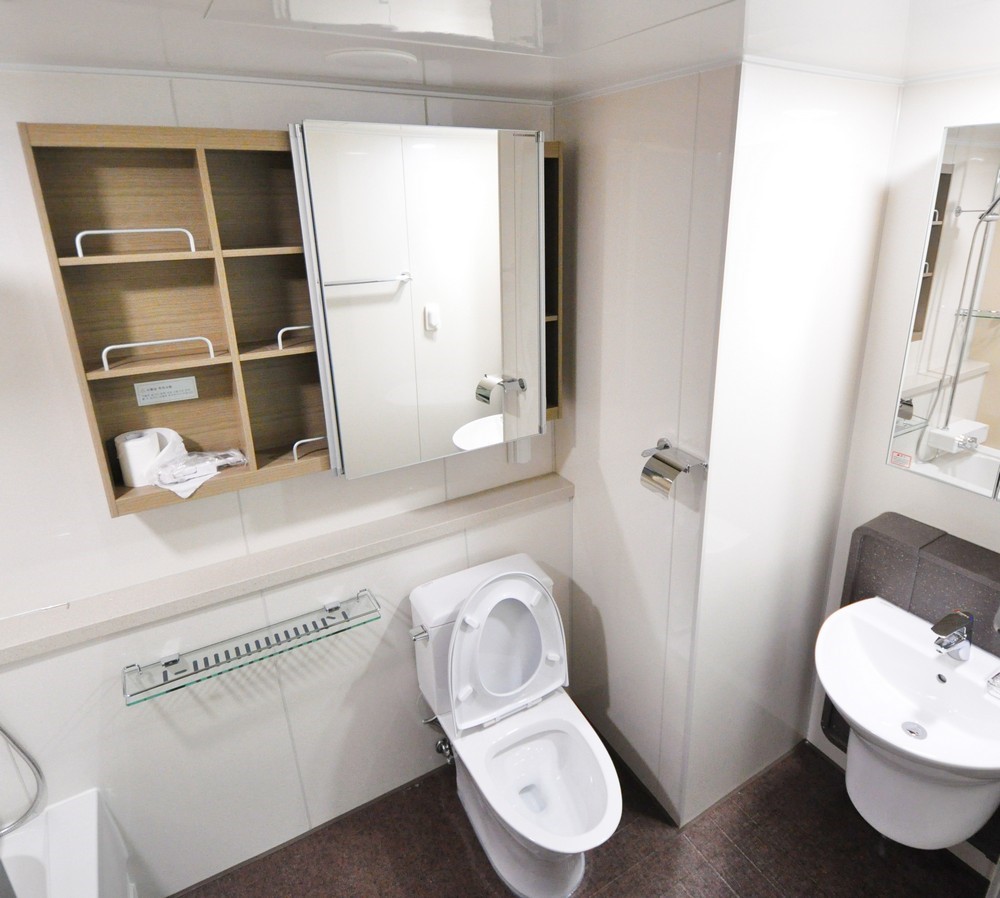Reasons for Adding a Second Toilet: 2nd Toilet In Bathroom

Adding a second toilet to your bathroom might seem like an unnecessary expense, but it can significantly improve your daily life and potentially increase your home’s value. While it’s not a necessity, there are several compelling reasons why homeowners choose to install a second toilet.
Advantages of Having a Second Toilet
Having a second toilet can bring numerous advantages, improving convenience, privacy, and even resale value.
- Reduced Wait Times: A second toilet eliminates the need to wait for someone to finish in the bathroom, especially during busy mornings or when multiple people are using the bathroom simultaneously.
- Increased Privacy: Having two separate toilets provides a greater sense of privacy, especially in multi-person households. It allows individuals to use the bathroom without feeling rushed or uncomfortable.
- Improved Hygiene: A second toilet can promote better hygiene, particularly in households with young children or elderly individuals who might need more frequent bathroom access. This reduces the risk of spreading germs and ensures a more hygienic environment.
- Increased Resale Value: Adding a second toilet can enhance the perceived value of your home, making it more appealing to potential buyers. It can be a significant selling point, particularly in homes with multiple bedrooms or bathrooms.
Disadvantages of Having a Second Toilet
While the benefits of a second toilet are numerous, there are a few drawbacks to consider.
- Cost: Installing a second toilet involves significant upfront costs, including the toilet itself, plumbing, and labor. This can be a substantial expense, especially if you need to renovate your bathroom to accommodate the new fixture.
- Space Constraints: Adding a second toilet requires space, which might be limited in smaller bathrooms. You may need to adjust the layout of your bathroom or make compromises with other fixtures.
- Potential Maintenance: Adding another toilet means more fixtures to maintain, including cleaning and occasional repairs. It can also increase your water usage, which might impact your utility bills.
Bathroom Layouts that Benefit from a Second Toilet
A second toilet can be particularly beneficial in certain bathroom layouts.
- Master Bathrooms: Master bathrooms with en-suite facilities often benefit from a second toilet, providing greater convenience and privacy for the homeowner.
- Guest Bathrooms: Having a separate toilet in a guest bathroom offers greater comfort and privacy for visitors, making them feel more welcome and at ease.
- Multi-Bathroom Homes: Homes with multiple bedrooms and bathrooms often benefit from having two toilets, particularly in situations where there is high traffic or frequent bathroom usage.
- Open Floor Plans: In homes with open floor plans, a second toilet can be strategically placed to provide privacy and minimize noise, especially if the bathroom is located near living areas.
Planning and Installation Considerations

Adding a second toilet to your bathroom is a significant project that requires careful planning and execution. You’ll need to consider several factors to ensure a smooth and successful installation process.
Plumbing Considerations
The plumbing system plays a crucial role in the success of your second toilet installation. You’ll need to determine the existing plumbing capacity and ensure it can accommodate an additional toilet. If your current plumbing system is inadequate, you may need to upgrade it, which can be a costly and time-consuming process. Here are some factors to consider:
- Existing Plumbing Capacity: Check your current plumbing system to see if it can handle the added load of a second toilet. Consult a plumber to determine the capacity of your existing system and whether it can support the additional fixture.
- Water Pressure: Ensure adequate water pressure to support both toilets. Low water pressure can lead to slow flushing and other problems. You may need to install a pressure booster pump if the pressure is insufficient.
- Waste Line: The waste line needs to be large enough to handle the increased volume of waste from two toilets. If the existing line is too small, you may need to upgrade it.
- Vent Line: A vent line is essential for proper drainage and to prevent sewer gases from entering your bathroom. Ensure your vent line is adequately sized and properly connected.
Space Limitations, 2nd toilet in bathroom
The available space in your bathroom will significantly impact the installation process. Measure the space carefully to ensure you have enough room for the new toilet, its supply lines, and any necessary modifications.
- Toilet Dimensions: Consider the size and shape of the toilet you choose. Measure the available space carefully to ensure the toilet fits comfortably without obstructing walkways or other fixtures.
- Wall Space: Ensure you have enough wall space for the toilet’s supply lines and drain pipe. You may need to move existing fixtures or relocate walls to accommodate the new toilet.
- Accessibility: Consider the accessibility of the new toilet, especially if it’s intended for use by individuals with mobility limitations. Ensure there is adequate space for maneuvering a wheelchair or other assistive devices.
Budget Considerations
Adding a second toilet can be a significant investment, and it’s essential to have a clear budget in mind before starting the project. The cost can vary depending on factors such as the type of toilet, plumbing work, and any necessary modifications.
- Toilet Cost: Toilets come in a wide range of prices, from basic models to high-end smart toilets. Choose a toilet that fits your budget and meets your needs.
- Plumbing Costs: Plumbing work can be expensive, especially if you need to upgrade your existing system. Get quotes from multiple plumbers to compare prices and services.
- Modifications: If you need to move existing fixtures or relocate walls, the cost of modifications can add up quickly. Factor these costs into your budget.
Installation Process
The installation process involves several steps, including:
- Prepare the Area: Clear the area where the toilet will be installed. Remove any existing fixtures or obstructions. Cover the floor and surrounding areas with drop cloths to protect them from dirt and debris.
- Connect the Supply Line: Connect the supply line to the toilet’s water inlet valve. Ensure the connection is tight and secure to prevent leaks.
- Install the Drain Pipe: Connect the drain pipe to the toilet’s outlet and secure it to the waste line. Ensure the connection is tight and secure to prevent leaks and clogs.
- Connect the Vent Line: Connect the vent line to the toilet’s vent outlet and secure it to the existing vent system. This step is crucial for proper drainage and to prevent sewer gases from entering your bathroom.
- Install the Toilet Bowl: Carefully lower the toilet bowl onto the drain pipe and secure it to the floor using the provided bolts. Ensure the bowl is level and stable.
- Install the Toilet Seat and Cover: Install the toilet seat and cover, making sure they are securely attached.
- Test the Toilet: Flush the toilet to check for leaks and proper drainage. If any issues arise, address them immediately.
Potential Challenges and Solutions
During the installation process, you may encounter some challenges. Here are some common challenges and solutions:
- Existing Plumbing Issues: If your existing plumbing system is inadequate, you may need to upgrade it. Consult a plumber to determine the best course of action.
- Space Limitations: If you have limited space, you may need to get creative with the installation. Consider using a wall-mounted toilet or a compact model.
- Access Issues: If you have difficulty accessing the area where the toilet will be installed, you may need to hire a professional plumber to assist with the installation.
Design and Style Options

Adding a second toilet doesn’t just mean adding functionality; it’s an opportunity to enhance the aesthetic appeal of your bathroom. With a range of styles and designs available, you can seamlessly integrate the new fixture while complementing the existing decor.
2nd toilet in bathroom – Choosing the right toilet style goes beyond mere aesthetics. It’s about ensuring a cohesive and harmonious bathroom design. A well-chosen toilet can elevate the overall ambiance, making your bathroom feel more spacious, modern, or classic, depending on your preference.
Toilet Styles and Designs
The world of toilet design offers a plethora of options, each catering to different tastes and bathroom styles. Here’s a breakdown of some popular choices:
- Round-Front Toilets: These are the most common and budget-friendly option. They feature a rounded bowl and tank, offering a classic and traditional look that blends well with various bathroom styles.
- Elongated Toilets: Providing more seating space and comfort, elongated toilets are gaining popularity for their modern and ergonomic design. They offer a more spacious and contemporary feel, often preferred for larger bathrooms.
- One-Piece Toilets: As the name suggests, these toilets have a single, integrated design, eliminating the visible seam between the bowl and tank. This creates a sleek and minimalist aesthetic, often found in contemporary and modern bathrooms.
- Two-Piece Toilets: Traditional and readily available, two-piece toilets consist of a separate bowl and tank. They offer greater flexibility in terms of installation and maintenance, making them a practical choice for many homeowners.
- Wall-Mounted Toilets: For a modern and space-saving solution, consider wall-mounted toilets. These sleek designs are suspended from the wall, giving the illusion of more floor space. They are ideal for smaller bathrooms and offer a contemporary touch.
Toilet Designs for Small Bathrooms
In small bathrooms, every inch counts. Here are some design considerations to maximize space and style:
- Compact Toilets: These toilets are specifically designed to fit smaller spaces without compromising functionality. They often have a smaller footprint, making them ideal for powder rooms or cramped bathrooms.
- Corner Toilets: For maximizing floor space, corner toilets are an excellent choice. They are designed to fit snugly in a corner, freeing up valuable floor area for other bathroom fixtures.
- Wall-Mounted Toilets: As mentioned earlier, wall-mounted toilets create the illusion of more space by eliminating the bulk of a traditional toilet base.
Toilet Designs for Unique Spaces
For bathrooms with unique layouts or design themes, there are toilet options that cater to specific needs and aesthetics.
- Pedestal Toilets: These classic toilets feature a pedestal base that conceals the plumbing, creating a sleek and elegant look. They are ideal for adding a touch of vintage charm to a bathroom.
- Back-to-Wall Toilets: These toilets are designed to be installed against a wall, creating a seamless and integrated look. They are often found in modern and minimalist bathrooms.
The second toilet in the bathroom, always a bit of an enigma, sat silently in the corner. Its presence hinted at a past filled with secrets, perhaps a family that had grown too large for a single throne. The room itself was a testament to a different era, with a hamptons style bathroom vanity that whispered of elegant gatherings and hushed conversations.
And yet, the second toilet remained, a silent observer, holding onto its secrets.
The second toilet in the bathroom, tucked away behind a dusty curtain, had always been a source of whispered rumors. It was never used, its porcelain throne forever pristine, yet it seemed to hold a secret, a forgotten story.
Perhaps it was a relic from a time when the house was larger, a testament to a family now scattered, or maybe it was a hidden portal to another realm, a doorway to the past or future. Whatever the truth, it was a constant reminder of the mysteries that lingered within these walls, just like the secrets held within a ranch style master bathroom with its own unique quirks.
The second toilet, with its enigmatic silence, whispered of a past that still held its breath, waiting to be unveiled.